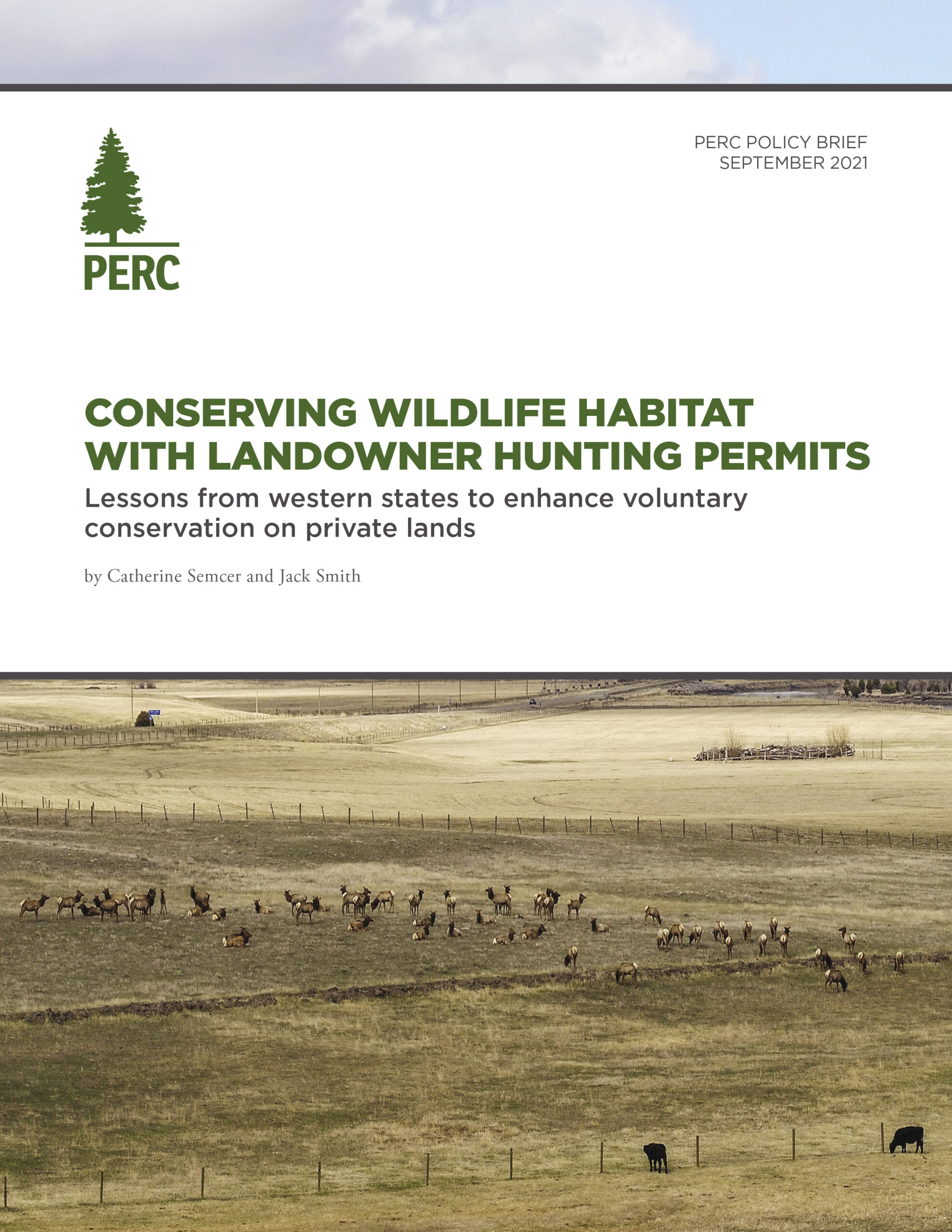DOWNLOAD THE FULL REPORT
The way private lands are managed and developed has an outsized impact on publicly managed wildlife. In the West, this dynamic stems partly from historical settlement patterns—in the 19th century, the same river valleys that were hotspots of biodiversity and provided winter forage for elk, deer, and other large ungulates were also the best suited for farming and ranching. As a result, many key habitat areas came into private ownership.
Today, private landowners remain essential conservationists of wildlife habitat. Elk, deer, and pronghorn can impose substantial financial burdens on ranchers and farmers—including lost forage, property damage, and disease risk—that decrease their interest in supporting wildlife and increase their vulnerability to development pressures. As populations grow in the West, these pressures mount, threatening habitat and the wide range of other benefits private lands provide to the public, including clean water and carbon sequestration.
Relieving wildlife-related costs is one way to encourage habitat conservation and other environmental benefits that stem from private lands. Policy tools can also go further by providing tangible incentives for landowners to improve habitat quality.
One way state wildlife agencies have attempted to offset the costs of large ungulates to property owners and enhance private land habitat has been to give landowners transferable hunting permits. Landowners can either use such permits themselves or sell the permits to other hunters. This market-based model that allows permits to be transferred lets landowners tap into the multi-billion-dollar U.S. hunting market, which can create new revenues that counterbalance the cost of living with wildlife and promote conservation practices that maintain or enhance habitat.
Despite their potential benefits, however, transferable hunting permit programs face opposition from some hunters and hunting outfitters, stymying attempts to establish new programs and prompting changes in current ones. Controversy over transferable permits signals the need for state agencies to provide better evidence of clear, measurable benefits that such programs provide to hunters and the wider public.
By examining programs in Colorado, Nevada, New Mexico, Oregon, and Utah, this brief offers recommendations for transferable hunting permit policies that would maximize conservation benefits in line with state wildlife agency goals. With the right structure, such programs can encourage protection of wildlife habitat, mitigate human-wildlife conflict, increase hunting opportunities, and promote conservation in the public interest.
DOWNLOAD A TWO-PAGER EXPLAINER SUMMARY
HIGHLIGHTS
- Private lands provide critical wildlife habitat and other conservation benefits to the public, but the presence of publicly managed wildlife can increase financial costs for landowners, especially ones dependent upon agriculture for their livelihoods.
- Wildlife costs contribute to the risk of converting land for development and decrease landowners’ willingness to improve and expand habitat.
- Various states provide transferable hunting permits to landowners to offset wildlife-related costs borne by private property owners and encourage additional wildlife conservation on private lands.
- Western states’ transferable hunting permit programs offer lessons for enhancing voluntary conservation on private lands.
RECOMMENDATIONS
Enhance Accountability
1. Require landowners to steward quality habitat or bear wildlife-related costs to qualify for permits.
2. Adjust permit numbers according to property-level conditions.
3. Align landowner goals with state conservation plans.
Empower Landowners
4. Respect private property rights while facilitating public access.
5. Allow small property owners to apply for permits as a group.
Ensure the Public Receives Fair Value for Wildlife
6. Give landowners permit vouchers, retaining authority to sell permits within state agencies.
7. Limit permit applicability to landowners’ private property except in special instances.
Download the full report, including endnotes and references.





